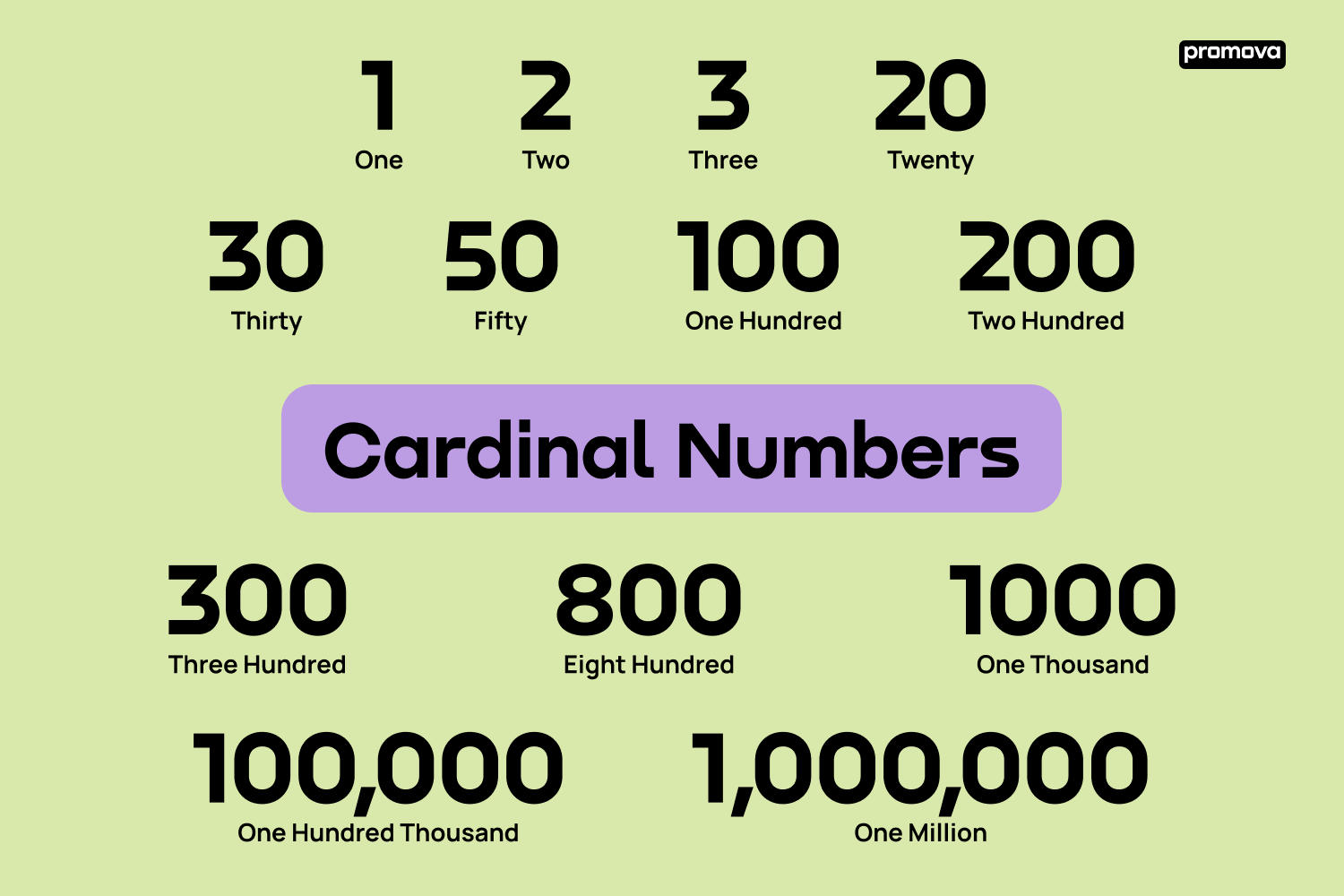Vocabulary of Cardinal Numbers in English
Contents
This article will guide you through the vocabulary of cardinal numbers in English. 
What is a Cardinal Number?
A cardinal number is a number that specifically signifies quantity. It represents "how many" of something there are, ranging from 0 (zero) to infinity. Cardinal numbers are used for counting and answering questions like 'How many apples are there?' These numbers, such as 1, 2, 3, 4, etc., contrast with ordinal numbers that denote position or order in a series like first, second, third, and so forth.
Cardinal Numbers From 1 to 20
Knowing the cardinal numbers from 1 to 20 provides you with the foundational language needed for basic counting in English. These are the building blocks, and understanding them is crucial. Here's a table to familiarize yourself with these terms:
| Number | Word Equivalent |
| 1 | One |
| 2 | Two |
| 3 | Three |
| 4 | Four |
| 5 | Five |
| 6 | Six |
| 7 | Seven |
| 8 | Eight |
| 9 | Nine |
| 10 | Ten |
| 11 | Eleven |
| 12 | Twelve |
| 13 | Thirteen |
| 14 | Fourteen |
| 15 | Fifteen |
| 16 | Sixteen |
| 17 | Seventeen |
| 18 | Eighteen |
| 19 | Nineteen |
| 20 | Twenty |
Once you have mastered these numbers, you will find it much easier to understand the rest of the numerical system in English. The key is to memorize and practice their use in daily life.
Cardinal Numbers in Multiples of 10
After learning cardinal numbers 1-20, understanding numbers in English becomes much easier. From 30 onward, most numbers are simple combinations of tens and single units. Here are the cardinal numbers in multiples of 10:
| Number | Word Equivalent |
| 30 | Thirty |
| 40 | Forty |
| 50 | Fifty |
| 60 | Sixty |
| 70 | Seventy |
| 80 | Eighty |
| 90 | Ninety |
| 100 | One Hundred |
By understanding these, you can form numbers such as '33' (thirty-three), '47' (forty-seven), and all the other numbers 1-100. These set the stage for combining numbers and are used frequently in daily conversation and writing. Being confident with these will enable you to comprehend and form any number between 20 and 100, and even beyond.
12
Hundreds of Cardinal Numbers 100 to 1000
Mastering hundreds of cardinal numbers from 100 to 1000 is a significant step in your English learning journey.
| Number | Word Equivalent |
| 100 | One Hundred |
| 200 | Two Hundred |
| 300 | Three Hundred |
| 400 | Four Hundred |
| 500 | Five Hundred |
| 600 | Six Hundred |
| 700 | Seven Hundred |
| 800 | Eight Hundred |
| 900 | Nine Hundred |
| 1000 | One Thousand |
For numbers within these hundreds, you simply add the 'and' plus the rest of the number. For example, '375' would be 'three hundred and seventy-five'. This familiarity expands your ability to discuss quantities and prices, tell the time, talk about the weather (in terms of temperature), and more. Remember, for numbers between hundreds, just add 'and' plus the rest of the number. Keep practicing, and you will become comfortable with these numbers.
Larger Cardinal Numbers
Understanding larger cardinal numbers is essential for discussing quantities in the thousands and millions, such as populations, distances, or finances. These numbers follow the same pattern you've already learned, just on a larger scale.
| Number | Word Equivalent |
| 1,000 | One Thousand |
| 10,000 | Ten Thousand |
| 100,000 | One Hundred Thousand |
| 1,000,000 | One Million |
Just remember, within these larger numbers, the pattern you've already learned repeats. For example, '1,234,567' would be 'one million, two hundred thirty-four thousand, five hundred and sixty-seven'.
Conclusion
In this article, you learned about the cardinal number meaning in the context of the English language. Cardinal numbers are essential for expressing quantities and are a fundamental part of learning the English language. This guide to numbers in English, from 1 to millions, has helped you better understand and feel more confident using cardinal numbers.
Comments